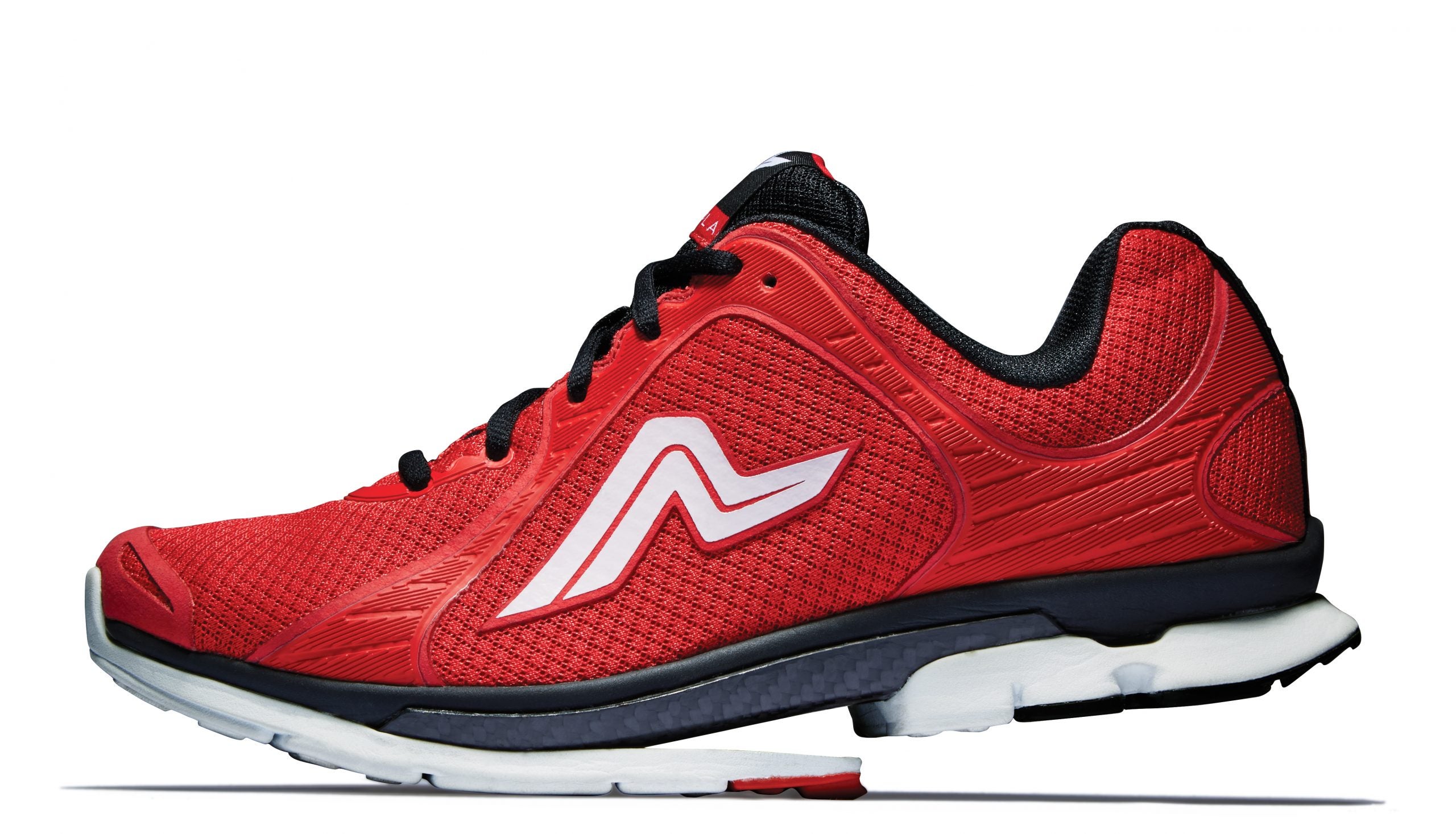In early October 2015, David Bond was doing final inspections on the potentially groundbreaking running shoe heŌĆÖd been developing for close to two years. The ,╠²with a carbon-fiber,╠²lever-like outsole based on kinematic science to help propel a runner forward,╠²was poised to enter the fiercely competitive running shoe market. Debuted at trade show in December 2014, the shoe garnered enough buzz (we were one of many media brands to cover the new product)╠²that Bond expected early success.╠²
ŌĆ£We were ready to go to market,ŌĆØ says Bond, who helped develop the and worked at Adidas and K-Swiss before co-founding Ampla. ŌĆ£We were weeks away when the plug was pulled. It was a bummer.ŌĆØ╠²
Launching╠²a new running-shoe brand has become increasingly difficult. ThereŌĆÖs speculation that the running╠²shoe industry has hit a plateauŌĆöa stagnant, hard-to-sell-into plateau. In October, Boulder, Colorado╠² fired two-thirds of its staff.╠²According to numbers acquired by , first-quarter shoe sales, in unit numbers, were down from 2014 to 2015 (but up in the second quarter).╠²
ŌĆ£The running shoe business, especially the run specialty business, has been on a rocket ride, with double-digit growth for the last ten╠²years,ŌĆØ says Mark Sullivan, editor of and president of the Running Event. ŌĆ£I think over the last 18 months, itŌĆÖs definitely slowed down.ŌĆØ Sullivan, however, remains optimistic, explaining, ŌĆ£I believe this is a natural evolution in any growing business, going through a maturation phase and digestion period.ŌĆØ
ŌĆ£Once you get into the game with a new product or new idea,ŌĆØ says╠²David Bond, ŌĆ£then the transition from╠²being a one-trick pony to a running brand is the tough part.ŌĆØ
As the pie shrinks, the little brands are left fighting over a smaller and smaller share of the market, making it especially difficult for new companies to get a spot on running store shelves. dominates the market, followed by Asics, New Balance, Saucony, Mizuno, Nike, and Adidas. ŌĆ£All the rest,ŌĆØ says Sullivan, ŌĆ£including Pearl Izumi, Newton, Hoka, Inov8, and╠²On Running╠²are scrapping for 10 percent of the market.ŌĆØ╠²
ThatŌĆÖs not to say upstarts canŌĆÖt make it. , Newton Running, and Hoka One One all had successful debuts, thanks in part to their business approaches. They each launched with innovative products that excited both retailers and consumers. In the case of Hoka, it created a whole new market╠²segmentŌĆömaximalist shoes. ╠²╠²
But the larger brands still have the edge over their small competitors when it comes to infrastructure, support, and dollars. ŌĆ£Once you get into the game with a new product or new idea,ŌĆØ says Bond, who has 25 years of experience in the footwear industry, ŌĆ£then the transition from╠²being a one-trick pony to a running brand is the tough part.ŌĆØ
ThatŌĆÖs where a big parent company can come in handy. Ampla╠²had only two full-time employees╠²but was owned by surf lifestyle behemoth . For some companiesŌĆöincluding Altra, which has been owned by ICON Health and Fitness since before it launched its first shoe in 2011, and Hoka One One, which was bought in 2012 by Deckers USAŌĆöthe infrastructure of a large parent can support the innovations of the new-to-the-party shoe brands, helping them thrive among bigger, more established competitors. ╠²
But that setup can backfire. When Quiksilver filed for bankruptcy in September 2015, it wasnŌĆÖt willing to continue investing in the Ampla shoe. ŌĆ£When youŌĆÖre bankrupt, you stop investing in things that arenŌĆÖt in your core competency,ŌĆØ Bond says.╠²
Right now, itŌĆÖs a mystery how the Ampla shoes would have sold. But we might get an answer soon. As of this writing, Running Insight reported that two former executives from Quiksilver, Rob Colby and Charles Exon, had bought rights to the shoe. Bond says theyŌĆÖve contacted him about potentially working on the product again, but he wonŌĆÖt divulge more details.╠²
The good news╠²is that experts donŌĆÖt expect to see innovation going away, despite the slowed market. ŌĆ£Even in a tough business cycle,ŌĆØ says Sullivan, ŌĆ£you find ideas bubbling to the top.ŌĆØ╠²


